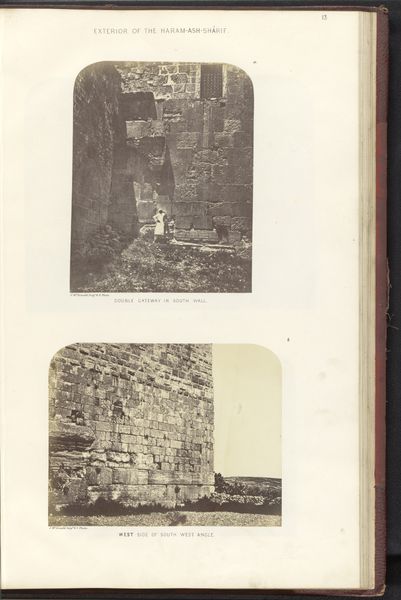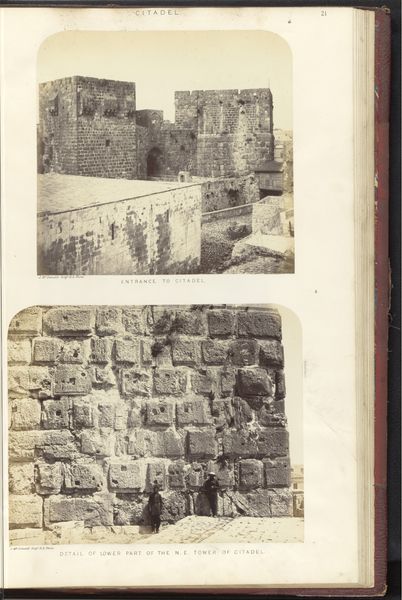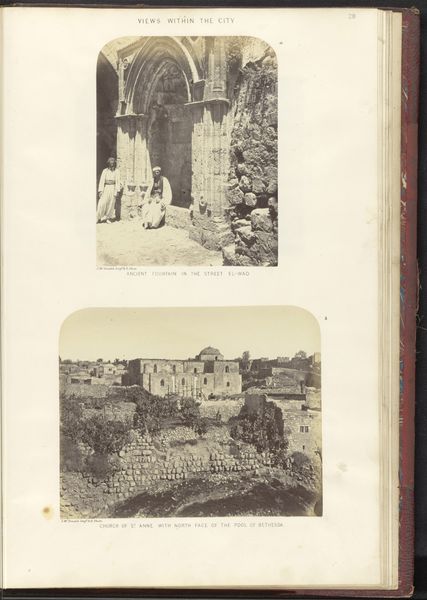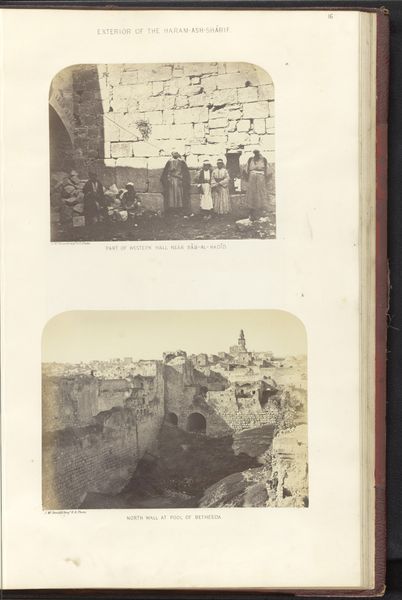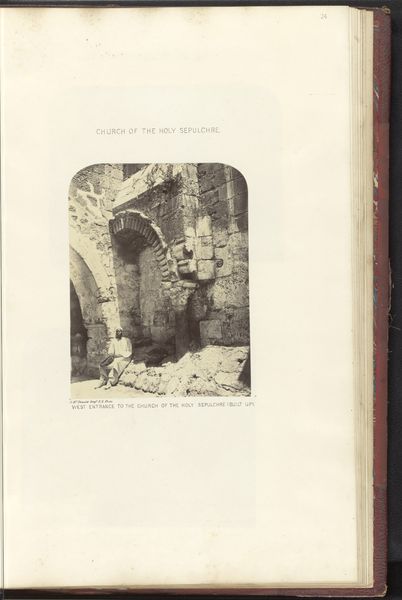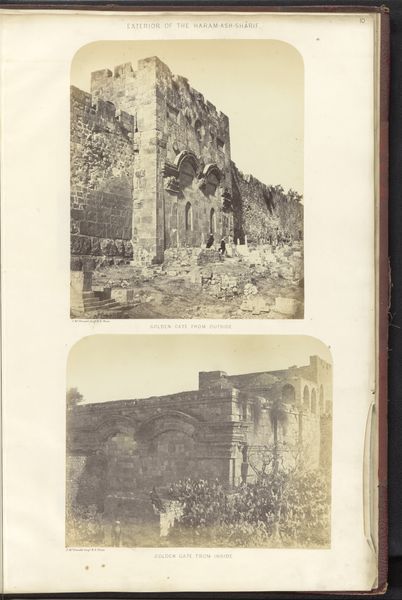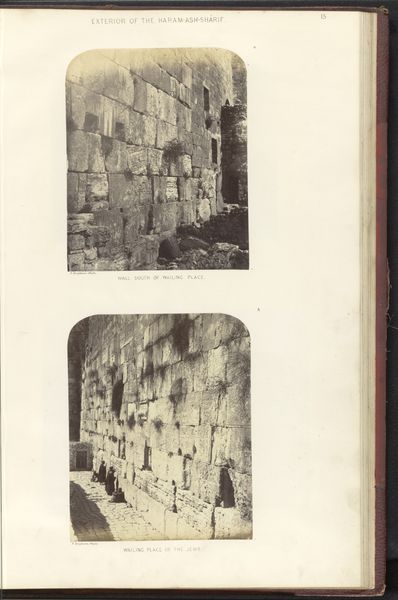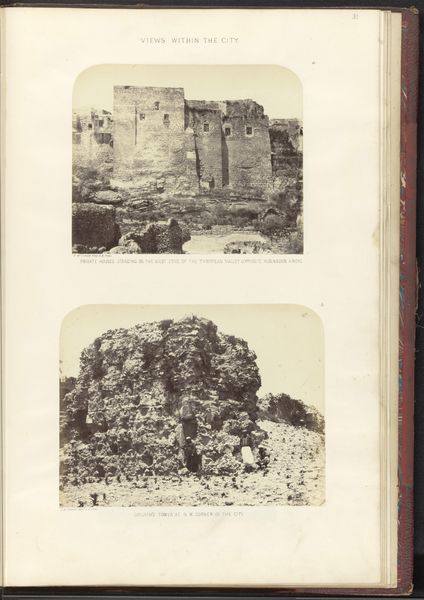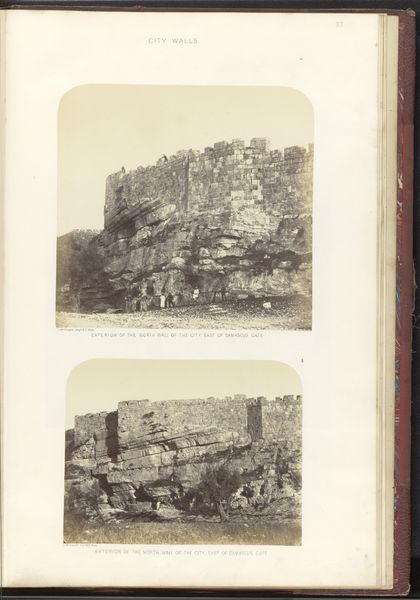
Gezicht op een oude toegangsweg bij de Damascuspoort en een gezicht op een deel van een boog in een muur van de bazaars, in Jeruzalem before 1865
0:00
0:00
daguerreotype, photography
#
landscape
#
daguerreotype
#
photography
#
coloured pencil
#
ancient-mediterranean
#
cityscape
#
islamic-art
Dimensions: height 523 mm, width 340 mm
Copyright: Rijks Museum: Open Domain
Editor: This daguerreotype, "Gezicht op een oude toegangsweg bij de Damascuspoort en een gezicht op een deel van een boog in een muur van de bazaars, in Jeruzalem," dates back to before 1865. It’s a very sobering composition to me. How do you interpret this work? Curator: It presents Jerusalem in a specific historical moment. Early photography like this served not only as documentation, but also helped shape Western perceptions of the "Orient." Notice the architectural focus, but also the inclusion of the man sitting by the Damascus Gate. Editor: He does seem somewhat posed, doesn’t he? Curator: Exactly. These photographs weren’t always objective. Consider how they might have been used to reinforce colonial narratives of a timeless, unchanging Middle East awaiting Western intervention or simply to show how other parts of the world were different than Western civilizations. What’s absent is just as crucial as what’s included. Where is the bustling modern commerce or military presence, or the politics and struggles for liberation? What does that absence suggest about the photographer’s or commissioner's intent? Editor: I hadn't considered the photographer's role in shaping perceptions like that. It is interesting to consider what is *not* included in the image. Curator: It urges us to question the narratives presented through visual media, especially regarding places and cultures often viewed through a colonial lens. And whose stories remain untold? Editor: This has given me a totally new perspective, to analyze what is visible *and* what's deliberately concealed, who’s doing the talking and more importantly who’s left out of the dialogue. Thank you! Curator: You're welcome. It highlights the importance of understanding the historical and political contexts in which art is produced and received.
Comments
No comments
Be the first to comment and join the conversation on the ultimate creative platform.

